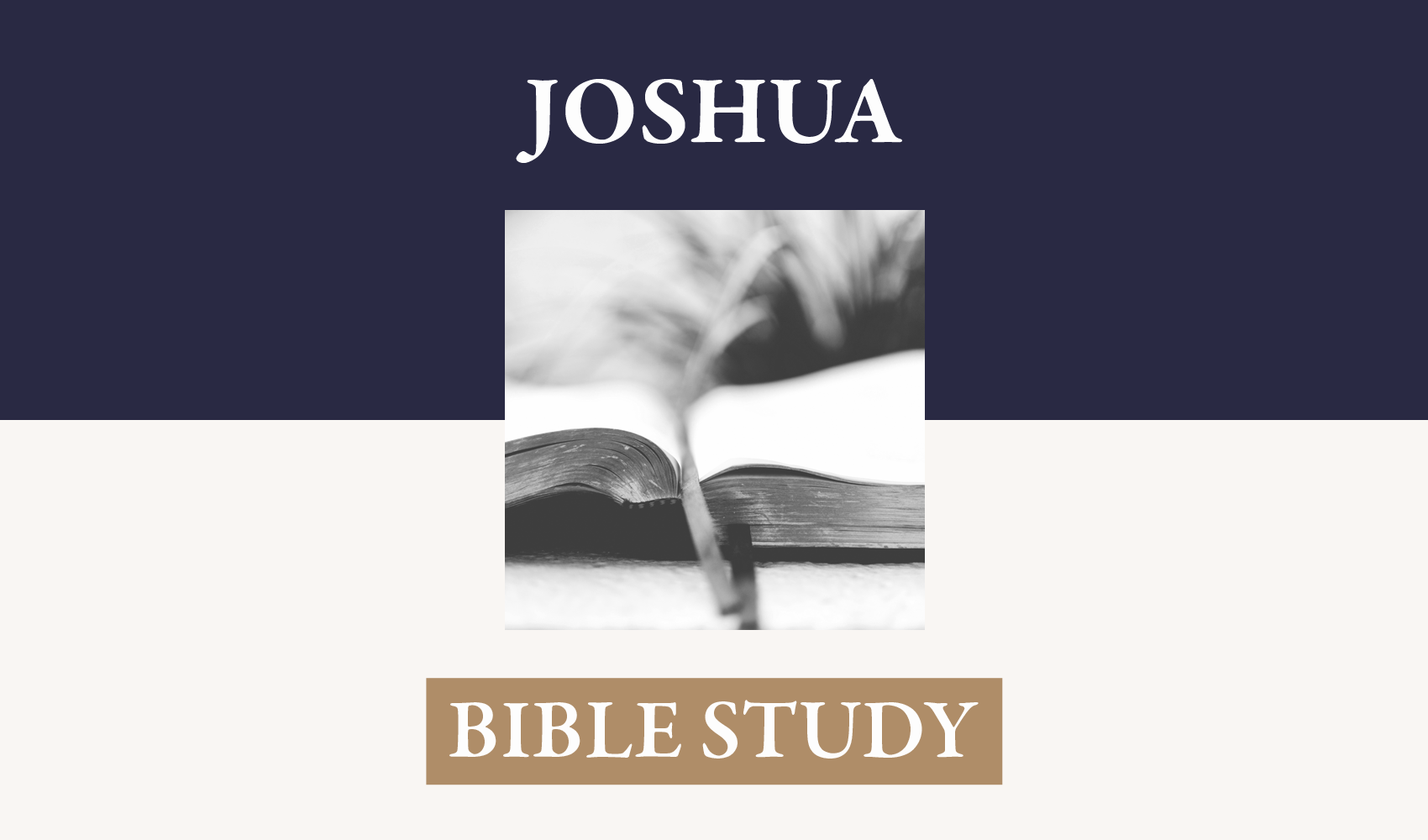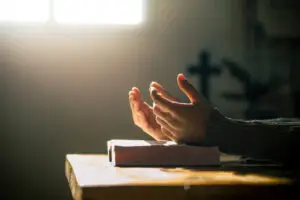Background: This first act of conquest was preceded by several events that would serve to distinguish this people from the people that God sent them to destroy.
- Spies had scouted the land and brought back a report of the fear of its inhabitants and the richness of it produce. (2:24).
- Rahab has shown her faith in hiding the spies and taking means to protect them. She is mentioned in Hebrews 11:31, James 2:25, Matthew 1:5 where she is listed as the mother of Boaz who was the great-grandfather of David. This event is given prominence in the narrative, by divine revelation and inspiration, because of the subsequent importance of Rahab in the history of redemption.
- God confirmed Joshua as leader of Israel by his parting of the Jordan (2:7; 4:14)
- Twelve stone from the middle of the Jordan have been set at its edge as a memorial of the action of God to lead the people across Jordan (4:21). God was with them.
- All those left uncircumcised during the wilderness wanderings were circumcised providing the ceremonial physical mark of their separateness as a people. (5:1-9) This is symbolic of regeneration (Philippians 3:1-3) which marks out the people of God under the New Covenant.
- They had celebrated the Passover, harking back to their original deliverance from the land of slavery in Egypt (5:10, 11). All of these showed God’s continual presence with them and the determination to accomplish through them as a people his eternally established covenant of redemption.
- When they crossed Jordan and partook of the produce of the land, the manna stopped. No longer were they wandering pilgrims but all provisions were now to come from Immanuel’s land. (5:11, 12)
- Joshua had seen the Son of God, the “Commander of the Lord’s army,” and has been shown that this is a holy appointment and that God Himself will take the battle. (5:13-15)
I. God had prepared the way for conquest by striking fear into the minds of the residents of Jericho (6:1, 2; Also see 5:1). From the testimony of Rahab (2:10, 11), the news of the complete destruction of the kings and their nations on the east of the Jordan had reached Jericho and the other cities of Canaan. Also, still fresh in the lore of this people, was the rescue from Egypt that involved the crossing of the Red Sea on dry land and the destruction of the army of Pharaoh forty years before. These cities would seek to prepare for the battle but would be fearful and distressed that such apparently supernatural intervention accompanied them.
II. Instructions given as to how to proceed (Verses 6:2-5). The order prescribed included armed men in front, perhaps particularly from the valiant men of the tribes of Reuben, Gad and the half-tribe of Manasseh, since they had made a special pledge to participate through the entire conquest for the sake of their brethren (1:12-15). At the rear, the rest of the people walked, perhaps preceded by another group of armed men, perhaps Danites who walked last through the wilderness. After the lead company of armed men came seven priests blowing seven ram’s horns. Then the ark of the covenant, borne appropriately by priests, followed. After the rear guard, the rest of the people marched so they too could observe, and participate in, the great victory of God on their behalf and for his glory.
III. The uniformity and simplicity of the first six days. They marched in this order for six days, going around the city only once, and then returned to the camp. (6:8-14).
A. This unlikely way of conquering a walled city was given, feasibly, as a test of obedience. Joshua, following the Lord’s command, gave strict instructions about the blowing of the trumpets and the silence of the people (6:8-10).
1. We can only speculate on the effect this would have on those that dwelled within the wall. They already were fearful, but this sort of attack must have confused them greatly and perhaps even amused them somewhat, making them wonder why they had so much fear of a methodologically challenged group of wanderers. It is not unfeasible that they began to sense and say “Peace and safety,” when sudden destruction would come upon them.
2. For the Israelites, this complete silence would emphasize the solemnity of the occasion. No talking, no nervous laughter, no snickering, no jokes about the process but an increasing solemnity each day as they approached the time when the entire city would be taken and everything, with stated exceptions, would be devoted to the Lord by destruction. This would be the first test of the command to show no pity—an awe-inspiring command.
3. The priority of the armed men, in light of the promise of the presence of the “man with the drawn sword,” showed their confidence that they were being led into this eventual battle by the Lord of Hosts. They were in the advanced portion of the company because they were led by the One who would fight for them.
4. Trumpets would be a sign of the presence of the Lord with the people as taught in Numbers 10:9.
- These, however, were not the silver trumpets as designated in that passage, but dull and unpredictably dissonant rams’ horns. This was to remind them that they had rebelled against the Lord in their first opportunity to take the land. The brilliance of both color and sound was gone to remind them that they were a base, colorless, weak, and non-meritorious people.
- Only the sound of the horn in the mouth of the priest would set before them God’s presence and their absolute dependence on his instruction. See Malachi 2:6, 7 for a statement of how the “lips of a priest” were to preserve the people. “True instruction was in his mouth, and unrighteousness was not found on his lips. . . . For the lips of a priest should preserve knowledge, and men should seek instruction for his mouth; for he is the messenger of the Lord of hosts.”
5. The ark of the Lord, harboring the place of propitiation, signified that this activity was in pursuit of God’s intention of mercy toward his people. They would not be a people at all if God did not have a purpose of redemption through the sacrificial offering of his Son for the sins of his people. This eternal Son would become the son of man through this people. Even as Joshua obeyed God’s command in prescribing this order, so the Son of God appeared as was commanded him in the eternal covenant to be called “Jesus, for he shall save his people from their sins.” (Matthew 1:21).
B. It also would verify that the “commander of the army of the Lord” (5:14) had come and the battle would be his. We are tempted to think that because God uses human instrumentality in accomplishing his purpose, that the success is a shared success. This is called “synergism,” or “cooperative working.” Though God uses means fitting, consistent, harmonious with the outcome of his purposes, the power of accomplishment always and finally rests with the effectual operation of God. “Our gospel came to you, not in word only, but also in power and in the Holy Spirit and in full conviction” (1 Thessalonians 1:5).
IV. The Destruction of Jericho on the seventh day (6:15-21)
A. The marching around the city involved a Sabbath. Though we have no chronological evidence to give empirical certainty, it would be theologically a consistent deduction to see the actual attack to have occurred on the Sabbath day.
1. The number seven is prominent throughout the narrative: seven priests blowing seven horns, walking the circumference of the city for seven days, finally moving to victory on the seventh day. The rhythm of life God has set in this framework and for the culmination of the faithful obedience of six days to come on the seventh would reconfirm their status as a people under the authority and commission of the God of heaven and earth, who created all things. Naaman had to dip himself seven times in the River Jordan in order to be cured of leprosy (2 Kings 5:10-14).
2. Joshua’s encounter with the man with a drawn sword, and learning that he stood on holy ground, could have been a Sabbath experience of worship. The beginning of the silent march would have begun the next day.
3. The march, had it begun on the first day of the week, the great victory over Jericho would have taken place on the seventh day. This would be a symbol of the true Sabbath rest that will come when all the enemies of God and his people will finally be placed under the feet of the Lord Jesus Christ, the commander of the Lord’s army (Hebrews 3:6-4:16). These symbols of seven along the way keep reminding us of God’s certain intention to bring the purpose of creation to its final state of glory.
4. Their winning the battle on the Sabbath, commanded as a day of rest from normal routine, established the Lord as God of the Sabbath and set the stage for Jesus’ confrontation with the Pharisees and Scribes over the meaning of the Sabbath and his lordship over it. (Matthew 12:1-15; Luke 13:10-17; 14:1-6). Even as the commander of Lord’s army led the people to destroy Jericho on that seventh day, so the Lord of the Sabbath (Matthew 12:8) manifested the great power of his work of redemption by healing on the Sabbath and putting to flight the destructive work of Satan. Jesus claimed to be the Lord of creation and the Lord of Israel in these actions.
5. Should this argument be the case, it emphasizes both the ceremonial aspects of the Sabbath commandment and the abiding moral element of it. The setting aside of a seventh day for rest and worship based on the rest of God and his own satisfaction with his work (Genesis 2:1-3; Exodus 20:8-11) establishes an abiding rhythm to be realized only at the return of Christ and the completion of the full Sabbath rest with the culmination of God’s redemptive purpose. After the resurrection on the first day of the week, the ceremonial aspect of the Sabbath’s focus on the seventh day was changed to the first day by virtue of the work greater than creation, that is, the payment of the price of sin and the justification of God’s chosen people (John 20:1, 19; Acts 20:7; Romans 4:24, 25; 1 Corinthians 16:1-3; Revelation 1:9, 10). Also those elements that concerned the peculiarity of Israel as a nation (Exodus 31:12-18; 35:2, 3; Numbers 15:32-36), even as the practice of sacrifice, would no longer be enforced as they were replaced by the completed work of Christ and the establishing of a people of God marked off by internal holiness, true praise, and continual conformity to Christ (2 Corinthians 6:16- 7:1; Hebrews 10:8-10, 19-25; 13:9-16). A stated time, however, of corporate worship, admonition, hearing of the word of God, singing of praises, giving, continues on the first day of the week as a regulated part of corporate witness and corporate sanctification.
V. Rahab and her family saved according to the word of the spies (2:8-21).
A. She had acknowledged the greatness of Jehovah and had proclaimed him as the only God (2:11).
B. She had left any loyalty to these people devoted to destruction, apparently believing that it was a just action on the part of the God of Israel, and was willing to die at their hands in order to see the purpose of God culminated (Matthew 10:34-42; Luke 12:49-53). She had received the spies, because they were people of the one true God, and she lived in Israel even to the time of the writing of the book of Joshua (6:25), married Salmon, by whom she bore Boaz.
C. She had put her life and that of her family at their disposal according to their terms (2:21), “According to your words” –See Mary’s words in Luke 1:38.
D. Silver and gold, and vessels of bronze and iron were not destroyed (See Numbers 31:21-23 for the manner in which these were to be kept), but were kept for the treasury of the house of the Lord; but far superior to that was the saving of Rahab and her family as part of the “chosen race, a royal priesthood, a holy nation, a people for his own possession” (1 Peter 2:9). Of her it could truly be exclaimed, “Once you were not a people, but now you are God’s people; once you had not received mercy, but now you have received mercy.”
E. She had followed their instruction and exhibited the scarlet cord outside her window, much in the fashion of the blood above the doorposts during the coming of the death angel in Egypt. Thus we find mercy mingled with judgment. That all are condemned to die because of sin and all its excrescences should not surprise us; that any one at all received mercy should astound us and bow our hearts in worship and praise, to “proclaim the excellencies of him who has called us out of darkness into his marvelous light” (1 Peter 2:9).





















